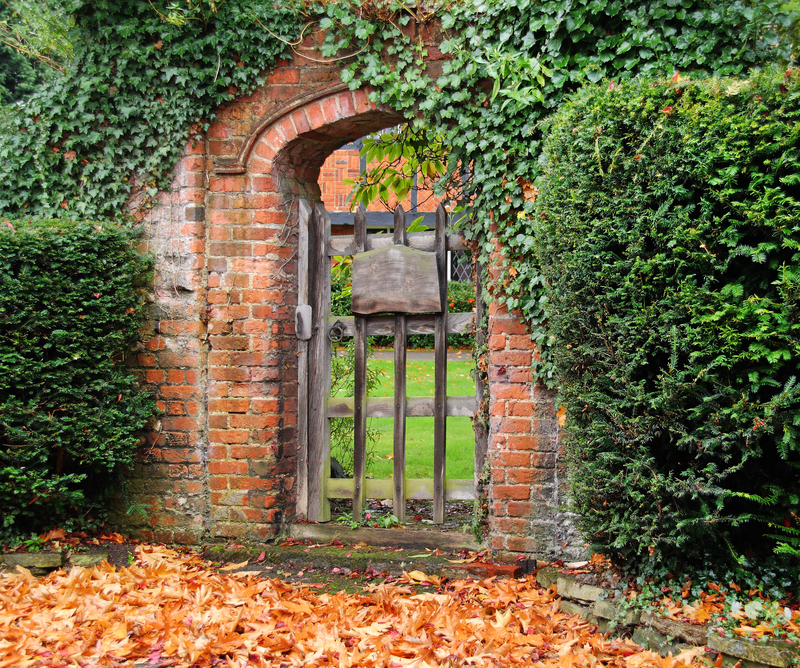Achieve Weed-Free Gardens with These Three Tips
Posted on 23/09/2025
Achieve Weed-Free Gardens with These Three Tips
Are you tired of battling relentless weeds in your cherished garden? If you dream of lush, vibrant flower beds and bountiful vegetable patches, achieving a weed-free garden is not just a wish--it's completely attainable! Taking a proactive and informed approach to weed management is crucial for garden success. In this comprehensive guide, we reveal three proven tips to help you keep unwanted plants at bay and cultivate beautiful, healthy gardens all season long.
Why Is Weed Management Essential for Gardeners?
Weeds are more than just an eyesore--they compete with your flowers, vegetables, and ornamental plants for precious nutrients, water, sunlight, and space. A weedy garden can quickly deteriorate, with plants becoming stunted, less productive, or even overtaken by aggressive invaders. By employing a combination of smart strategies, you can minimize weeding time while maximizing garden health and beauty.
The Downside of Chemical Weed Killers
While many commercial weed killers promise quick results, they often contain ingredients that may harm beneficial soil organisms, pollinators, pets, and even your family. Relying exclusively on chemical herbicides is less sustainable and may negatively affect your local ecosystem. That's why organic weed management practices are the best long-term solution to achieve a weed-free garden.

Top 3 Methods to Achieve a Weed-Free Garden
Let's dive into the essential techniques that help you maintain weed-free garden beds all year long. These methods are effective, environmentally friendly, and suitable for gardeners of all skill levels.
1. Practice Consistent Mulching
Mulching is one of the most powerful ways to suppress weeds and enhance your soil. A simple but highly effective step, mulching involves covering the soil surface with a protective layer that blocks sunlight and inhibits weed germination.
- Natural Mulch Options:
- Shredded leaves
- Wood chips or bark
- Grass clippings (from untreated lawns)
- Straw (seed-free)
- Pine needles
- Compost
- Mulching Benefits:
- Reduces weed growth: By forming a barrier, mulch stops weed seeds from accessing sunlight needed for germination.
- Preserves soil moisture: Mulch helps retain water, so plants require less frequent irrigation.
- Improves soil health: Many organic mulches break down over time, enriching your soil with nutrients.
- Insulates roots: Mulch moderates temperature swings, protecting plant roots year-round.
How to Apply Mulch for Maximum Weed Suppression
- Clear the Area First: Remove weeds and debris before adding a layer of mulch.
- Thickness Matters: Apply organic mulch 2-4 inches deep, but keep it several inches away from stems or trunks to prevent rot.
- Refresh Annually: Top up mulch as it decomposes, especially in the early spring or late fall.
- Use Landscape Fabric Carefully: For stubborn weed patches, consider using landscape fabric under mulch in pathways or around perennial beds, but beware of restricting water flow and soil health if overused.
Regular mulching is a foundational technique for weed-free gardening success.
2. Implement Smart Planting Strategies
Dense and strategic planting is a gardener's secret weapon against weeds. By minimizing bare ground, you reduce the opportunities for unwanted seeds to sprout. This approach creates a living mulch effect, where desirable plants naturally crowd out competitors.
- Close Spacing: When sowing seeds or transplanting seedlings, follow recommendations for the closest allowable spacing. Quick-maturing crops or low-spreading groundcovers can fill spaces before weeds intrude.
- Layering Plants: Combine tall, upright plants with lower-growing species. The resulting layered canopy shades the soil, depriving weeds of sunlight.
- Use Cover Crops: In vegetable gardens, sowing cover crops (like clover, rye, or buckwheat) in off-seasons not only fertilizes soil but also stifles weeds.
- Interplanting: Mix fast-growing annuals with slower-maturing crops. For example, lettuce or radishes can be interplanted between tomatoes or squash to outcompete weeds early in the season.
- Choose Groundcovers: For ornamental beds, insert perennial groundcovers--such as creeping thyme, sedum, or vinca--to form a green carpet that resists weed invasion.
With these smart planting designs, you naturally reduce the space and resources available to weeds--helping you achieve a tidy, weed-free garden without constant effort!
3. Master Timely Hand Weeding and Preventative Maintenance
While mulching and dense planting do much of the heavy lifting in weed prevention, regular hand weeding remains essential--especially during the early stages of weed growth. Catching weeds early, before they mature and set seeds, is crucial for long-term control.
- Weed Early and Often: Set aside a few minutes several times per week, especially after rain when the soil is damp and roots are easier to extract.
- Use Quality Tools: Invest in a hand fork, hoe, or cobrahead weeder. These tools make quick work of young weeds and minimize root disturbance for surrounding plants.
- Pounce on Seedlings: Young seedlings are easiest to pull and least likely to regrow. Focus on the tiniest intruders you see--they're often annual weeds with short lifespans but prolific seed production.
- Avoid Soil Disturbance: Minimize digging except where necessary, as tilling can bring buried weed seeds to the surface where they will readily sprout.
- Don't Compost Weeds with Seeds: Dispose of mature weeds properly, as many can still sprout from compost piles if not handled with sufficient heat.
Consistent, mindful weeding--especially in spring and early summer--pays off exponentially as the garden season progresses.
Other Tips for Maintaining Weed-Free Garden Beds
Beyond the "big three" weed-prevention strategies, there are several additional techniques to refine your success and create a truly spectacular, weed-resistant landscape:
- Irrigate Efficiently: Instead of overhead sprinkling, target the base of your plants with drip irrigation or soaker hoses. This deprives weeds in surrounding paths or open areas of the moisture needed to sprout.
- Edge Regularly: Use a sharp spade or edging tool to maintain clear boundaries between garden beds and lawns. This keeps invasive grasses and creeping weeds out of beds.
- Inspect and Patrol: Walk your garden frequently to spot new weed outbreaks early. Ten minutes a day is often all it takes to stay on top of trouble spots.
- Apply Corn Gluten Meal: As a pre-emergent natural herbicide (available at garden centers), corn gluten meal can be applied in early spring to prevent certain weed seeds from sprouting--just be careful if sowing desirable seeds at the same time.
- Encourage Healthy Soil: Healthy soils with thriving microbial life and balanced nutrients foster robust plant growth, which naturally resists weeds better than stressed, compacted, or infertile soil.
Common Garden Weeds and How to Identify Them
For ultimate weed control, it's helpful to know your enemies! Here are some of the most pervasive garden weeds, and tips for recognizing them:
- Dandelion (Taraxacum officinale): Recognizable by its round yellow flowers and jagged leaves, dandelions have deep taproots, making them tough to pull entirely unless the soil is moist.
- Crabgrass (Digitaria spp.): Flat, spreading, grassy clumps that invade bare soil during warm weather. Pull or hoe before they set seed.
- Bindweed (Convolvulus arvensis): Twining, vine-like growth with white or pink flowers. Persistent roots make this a challenge; consistent removal is critical.
- Chickweed (Stellaria media): Low, delicate, sprawling annual weed with tiny white flowers. An opportunist in cool, moist soil.
- Purslane (Portulaca oleracea): Succulent, reddish stems with fleshy green leaves. Thrives in heat; best controlled by quick removal when young.
Accurate identification ensures you select the optimal weeding method for each intruder and prioritize your efforts accordingly.

Frequently Asked Questions: Achieving Weed-Free Gardening
Can I really have a completely weed-free garden?
While achieving a 100% weed-free garden is a noble goal, even the most meticulous gardeners will encounter the occasional intruder. The key is making continuous weeding easier and faster, so weeds never have a chance to take over. With regular care and the techniques shared here, you can keep your garden virtually weed-free all season long.
What's the best time to weed?
The best time for hand weeding is after a rain or shortly after watering, when the soil is soft and roots slip out easily. Early spring and summer--when annual weeds are tiny and plentiful--are especially important times to stay vigilant.
Should I use black plastic to cover soil?
Black plastic sheeting can be effective for killing weeds in paths or between crops for short-term use. However, it may overheat roots or reduce soil health if left in place too long. Instead, prioritize organic mulches and living plant covers for long-term soil health and sustainability.
How do I control weeds organically?
The tips above--mulching, dense planting, and regular hand weeding--form the core of organic weed control. Avoid chemical herbicides whenever possible and enrich your soil with compost and organic matter for better results season after season.
Conclusion: Create Your Sustainable Weed-Free Garden
In summary, achieving a weed-free garden is entirely possible with the right approach. By combining thorough mulching, smart planting, and attentive hand weeding, you'll create an environment where weeds struggle and your desired plants thrive. Not only will your garden beds look better, but you'll also enjoy healthier soil, stronger plants, and less overall maintenance.
- Mulch generously to block emerging weeds and maintain moisture.
- Plant thoughtfully to crowd out competition.
- Weed regularly and preventatively to catch problems early.
Start today, and watch your garden transform into a lush, healthy, and truly weed-free sanctuary!



